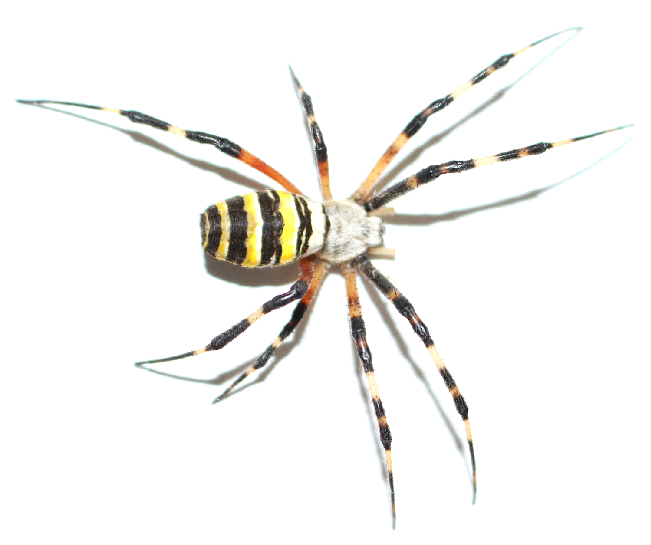Novel biomolecules identified from wasp spider venom
Researchers of the Fraunhofer Institute for Molecular Biology and Applied Ecology IME together with the Justus-Liebig-University of Giessen analysed the venom of wasp spiders and discovered a subset of novel biomolecules. Their results have recently been published in "Biomolecules".

With almost 50.000 described species, of which virtually all are venomous, spiders represent the most successful group of venomous animals. Their venoms usually abound with an astonishing chemical complexity and may harbor thousands of different components, of which several represent promising candidates for translation towards biomedical and agricultural application. However, the venoms of most spiders remain scientifically unstudied and from 10 million biomolecules that are estimated to exist in spider venom, only 0,02 percent have yet been discovered. In particular the venom systems of the small and harmless central European spider families remain enigmatic, as scientists so far focused on large and potentially dangerous tropical species.
Neuropeptide-like toxins discovered
An important gain in knowledge regarding neglected spider venom systems has now been achieved by scientists from the Fraunhofer Institute for Molecular Biology and Applied Ecology IME in close cooperation with colleagues from the Justus-Liebig-University of Giessen. In a pioneering study, funded by the "LOEWE Centre for Translational Biodiversity Genomics", they successfully decoded the venom composition of the invasive wasp spider Argiope bruennichi. Their work revealed that, in contrast to most spider venoms, the venom profile of wasp spiders is dominated by high molecular weight components and only yields very few different molecule classes. Moreover, the venom of wasp spiders features a subset of components that mirror insect neuropeptides. They likely act as neurotoxins and may be utilized for prey capture by the wasp spider. These biomolecules represent an important finding, as most of them were fully unknown to exist before. The study on wasp spider venom highlights that the native arachnofauna represents a promising resource of novel biomolecules with great potential in medical-, industrial- and agricultural bioprospecting.
About the Fraunhofer Institute for Molecular Biology and Applied Ecology IME
The Fraunhofer Institute for Molecular Biology and Applied Ecology IME, with over 530 employees at its six sites in Schmallenberg, Aachen, Gießen, Münster, Frankfurt/Main and Hamburg conducts research in the field of applied life sciences from a molecular level to entire ecosystems, in the areas of pharmacy, medicine, chemistry, agriculture, as well as environmental and consumer protection. Our mission is the development and use of novel technologies for diagnosis and therapy of human and animal diseases as well as the protection of crop plants and food sources.
Lüddecke T, von Reumont BM, Förster F, Billion A, Timm T, Lochnit G, Vilcinskas A,
Lemke S. An Economic Dilemma Between Molecular Weapon Systems May Explain an
Arachno-atypical Venom in Wasp Spiders (Argiope bruennichi). Biomolecules, 2020,
10(7), 978.
For further information, please contact:
Tim Lüddecke (Fraunhofer IME-BR, Giessen, Germany, tim.lueddecke@ime.fraunhofer.de)
Sarah Lemke (Justus-Liebig-Universität Giessen, Germany, sarah.lemke@agrar.uni-giessen.de)
Link to the Paper: https://www.mdpi.com/2218-273X/10/7/978
 Fraunhofer Institute for Molecular Biology and Applied Ecology IME
Fraunhofer Institute for Molecular Biology and Applied Ecology IME